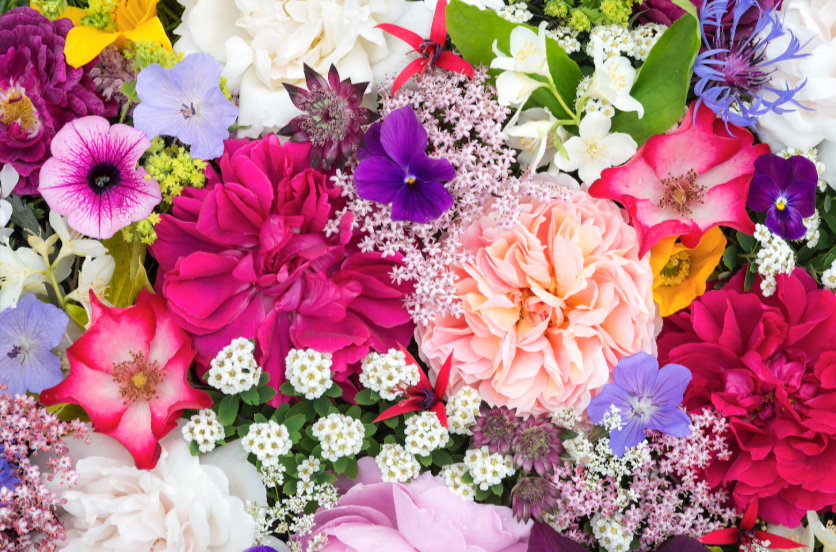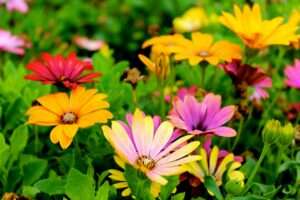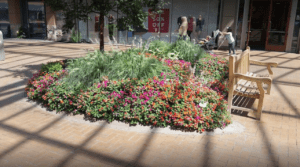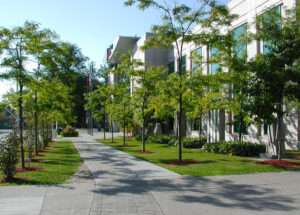One of the best parts of becoming a homeowner in Salk Lake City is developing a garden of your own, but there is a wide variety of flowers and plants from which to pick. This article will discuss the distinction between annuals and perennials and how to care for each type of plant in your garden properly.
What Kind of Plant Is an Annual?
The lifespan of an annual is significantly shorter than that of a perennial. A flowering plant in a garden that matures and dies in the same year is called an annual. An easy way to think about the life cycle of a flower is to imagine it as a seed planted in the spring that develops, blooms, and then dies before the first frost of fall.
Understanding when to plant annuals requires first understanding how they are categorized. The hardiness of annual flowers allows us to classify them into several groups:
Hardy Annuals
These are not affected by the chilly soil, cool air, or mild frosts that are common in the area. Such varieties can be planted around four weeks before the average frost-free date.
Half-Hardy Annuals
These can survive in chilly environments, although minor frosts will kill them. These can be planted about two weeks before the average last frost in your region.
Tender Annuals
Both the soil and the air temperature must be kept at a comfortable level for them. They can’t stand the cold and will die in the frost. In most areas, you’ll want to wait approximately two weeks following the last frost before planting them.
Knowing the differences between annuals and perennials can help gardeners extend their growing season beyond the typical window between the final spring frost and the first autumn frost.
4 First-time Annuals To Grow
Numerous types of annuals are available. We’ve compiled a list of some of the most popular annuals for new gardeners to get started with.
PETUNIAS
Petunias are among the most widely grown annual flowers in sunny locations. As a result of their modest requirements for care and prolific flowering, they are also ideal for beginners gardeners.
VERBENAS
Verbenas are a type of flower that can thrive in both shade and direct sunlight. They’re wonderful for use as a ground cover or as a spiller in a container because of their trailing nature and dense flower clusters.
CALIBRACHOAS
Due to the fact that they require adequate drainage, calibrachoas thrive best when they are confined to containers or raised garden beds. They thrive in bright light and will keep flowering right up to the first frost.
ZINNIAS
Flowers called zinnias are great for adding a splash of color to flower arrangements, window boxes, planters, and gardens of all sizes. Many people enjoy them because they draw in beneficial insects and winged creatures like butterflies and hummingbirds.
What Do We Mean When We Say “Perennial Plant”?
Plants that return year after year are called perennials. These plants can survive the winter by becoming dormant and always seem to come back in the spring. Most perennial flowers bloom for at least three years, however, others only endure two.
One major distinction between annuals and perennials is their level of hardiness. Although perennials are hardier than annuals, care must be taken when and where they are planted. There are perennials that thrive in the shade, like hostas, and those that thrive in full sun, like peonies.
There are perennials that thrive in the shade, like hostas, and those that thrive in full sun, like peonies.
Planting a variety of perennials that bloom at various times of the year is the key to a successful garden. Having something colorful to look at all spring and summer long is a bonus. Some perennials and the ideal planting season for each are listed below.
- Flowering in early summer and June are astilbe, coneflowers, and coreopsis.
- Russian sage, hosta, bloom throughout July and summer.
- Black-eyed Susans and asters bloom between August and September.
- Peonies and salvia are blooming in May, along with other springtime flowers.
There Are 4 Perennials That Are Great To Start With
Perennials are available in a wide range of species and variations, much like annuals. We’ve included a list of some of the most common varieties that are perfect for newbie gardeners.
ASTERS
Full light is necessary for asters, although they will bloom all the way until late autumn. Their ability to withstand winter means that their vibrant blues, pinks, and purples will continue to brighten your yard much after other summer flowers have faded.
SEDUMS
Although they can withstand dry conditions, sedums need full sun to thrive. Several different types exist, from those that grow slowly to those that quickly reach the sky.
FOXGLOVES
Foxgloves are frequently used in cottage gardening. You may find them in a rainbow of hues, and they reach great heights. Additionally, they are excellent in luring pollinators like butterflies and hummingbirds.
AMSONIAS
Aligning amsonias in groups enhances their aesthetic value. They are best grown in the spring and summer when given plenty of direct sunlight.
Knowing the distinction between annuals and perennials will help you immensely in your gardening endeavors.




